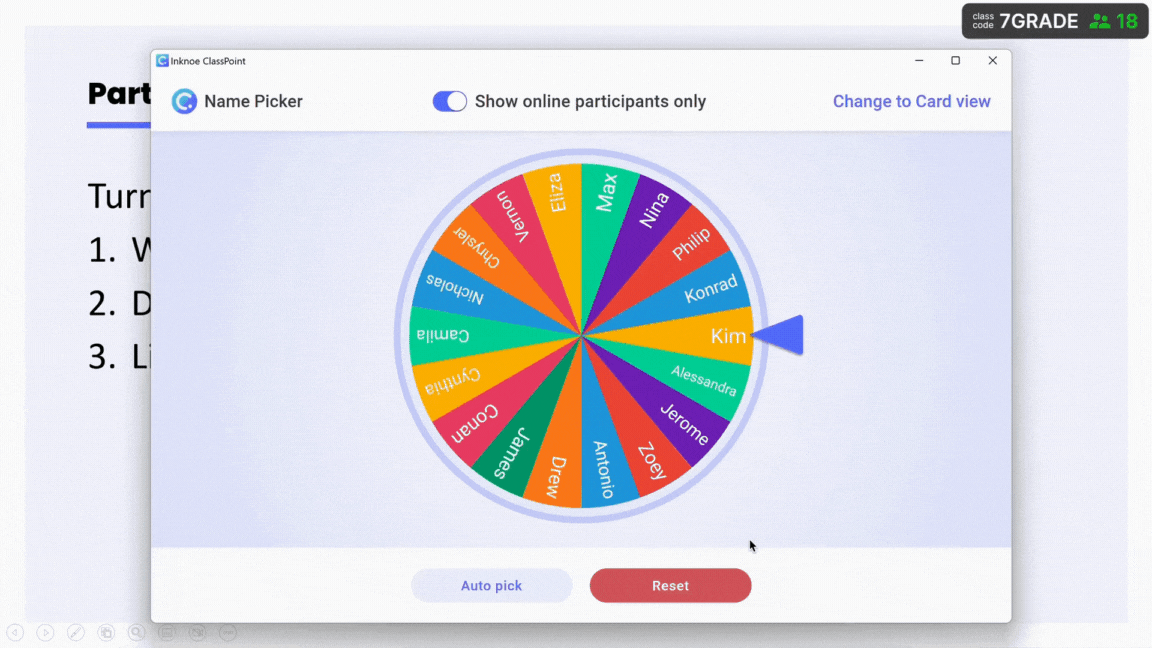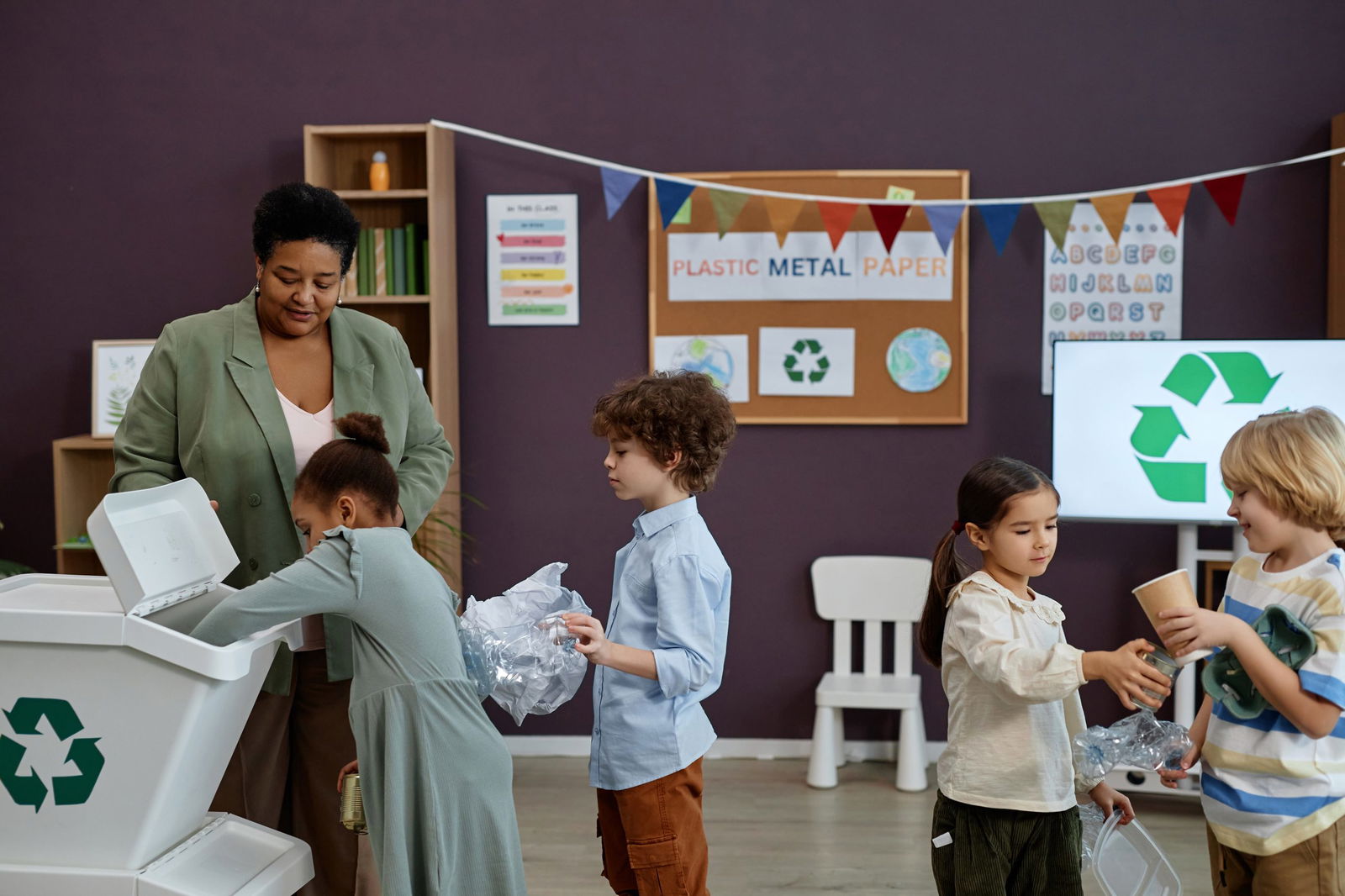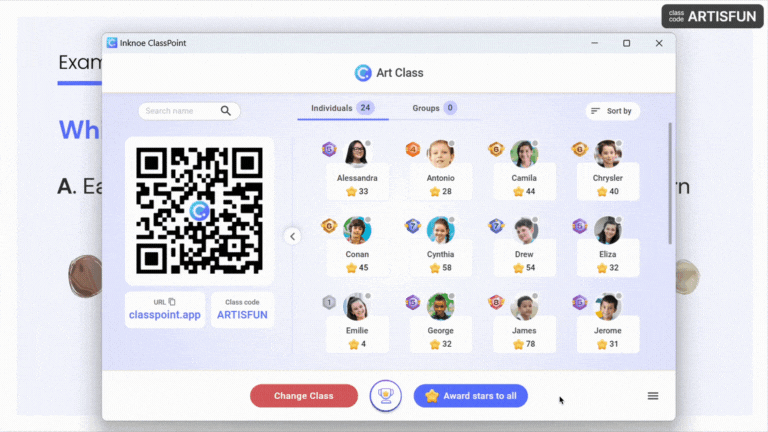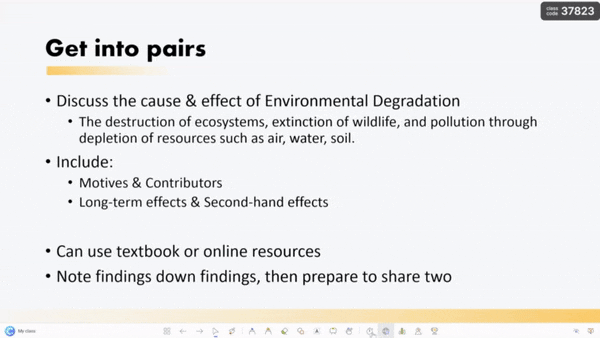Introduction
Transition activities for preschoolers aren’t something you cram into the schedule just to keep kids busy. These moments, often overlooked, are where kids learn some of their most important soft skills including how to regulate their emotions, and cooperate with others. Transitions are messy by nature. When done well, transition activities can lay the foundation for strong social skills that will serve children far beyond the classroom.
Working with preschoolers comes with its own set of challenges. Their attention spans are short, and their emotions can shift in an instant. Getting them to transition from one activity to the next without losing focus (or worse, melting down) can feel like herding cats.
The key is knowing when to step in and guide the flow. Certain parts of the day naturally lend themselves to transition activities for preschoolers, and recognizing these moments can make all the difference. Here are some best times to hold transition activities:
- When free play starts winding down and it’s time to regroup. Kids are deeply absorbed in their own worlds during free play, and pulling them away too abruptly can lead to frustration or resistance. A thoughtful transition activity for preschoolers gives them time to ease out of their play and into the next part of the day without feeling rushed
- As children trickle in during morning drop-off. Every child walks into the classroom with a different energy. Some eager to dive in, others hesitant or holding onto their parents. A warm and engaging transition activity for preschoolers helps everyone settle in at their own pace, creating a sense of connection and belonging right from the start
- Before heading outside for some much-needed movement. The excitement of outdoor play can quickly spiral into chaos if kids don’t know how to channel their energy. A playful transition activity for preschoolers helps them focus their anticipation and move with purpose instead of scattering in every direction
- After coming back inside, still buzzing from outdoor fun. It’s hard to go from running wild to sitting quietly, and kids need help making that shift. A calming transition activity for preschoolers brings their energy down gradually, helping them refocus and re-engage with quieter tasks
- During those inevitable wait times that catch you off guard. Lessons run short, snack prep takes longer than expected, and these pauses happen more often than we’d like. Without a plan, they can quickly lead to restlessness. Having a few simple transition activities for preschoolers ready to go turns these moments into opportunities for connection and learning
- At dismissal, when saying goodbye isn’t always easy. The end of the day can be emotional for kids. Some are eager to leave, while others struggle to say goodbye to their friends or teachers. A meaningful transition activity for preschoolers creates a sense of closure, helping them leave with a smile and a positive memory of the day
What Are Transition Activities?
Transition activities for preschoolers are structured routines or exercises designed to help children move smoothly from one activity or setting to another. These activities serve as intentional pauses in the day, giving children time to mentally and emotionally prepare for what comes next.
In early childhood education, transitions can often be treated as opportunities for learning more than just logistical necessities. Transition activities for preschoolers often incorporate elements of play, music, movement, or storytelling to make the process engaging and meaningful.
By embedding purpose into moments that might otherwise feel chaotic, teachers and caregivers create a calmer, more cohesive environment.
Examples of common transition activities for preschoolers include:
- Singing songs or rhymes to signal a change (e.g., “It’s time to clean up!”).
- Using visual cues like timers or picture schedules to show what’s coming next.
- Incorporating movement-based games like “Simon Says” or “Follow the Leader.”
- Practicing mindfulness exercises, such as deep breathing or stretching, to help children regroup.
Why These Are Important
Young children are still developing the skills needed to navigate change, and work with others. Without intentional support during transitions, these moments can become sources of stress or disruption. Below are some of the key reasons why transition activities for preschoolers matter so much:
- They turn chaos into calm. Kids often struggle to shift gears, especially when they’re deep in play or buzzing with energy. Transition activities for preschoolers act as a reset button, helping them regulate their emotions and prepare for what’s next.
- They build skills without feeling like work. Transitions are sneaky teachers. While kids think they’re just having fun, they’re actually practicing critical life skills like cooperation, and patience. These small moments add up, laying the groundwork for strong social skills.
- They give kids a sense of control. Predictability is everything for young children. When they know what’s coming next (and how to get there) they feel safer and more confident. Transition activities for preschoolers provide that structure, turning potentially stressful moments into opportunities for independence.
- They help kids adapt to change. Life is full of transitions, and preschool is the perfect place to start learning how to handle them. Moving from free play to circle time might seem small to us, but for a child, it’s practice for bigger changes down the road.
- They save your sanity (and your schedule). Let’s be honest: smooth transitions make everyone’s life easier. When kids know what to expect and how to move through the day, disruptions fade and the whole classroom flows better.
Unique and Actionable Transition Activities for Preschoolers That Actually Work
1. Musical Movement Transitions
Music is one of the easiest ways to guide preschoolers through transitions. Kids respond naturally to rhythm, and pairing movement with music helps them channel their energy productively.
Here’s how you can implement that for transitions:
- Play a song that matches the mood you’re aiming for. For example, use an upbeat tune for high-energy transitions or something slower for calming moments.
- Encourage kids to march, tiptoe, or dance as they move to the next activity.
- Create your own lyrics to familiar tunes. For instance, tweak “Twinkle, Twinkle” into a cleanup song: “Clean up, clean up, everybody everywhere…”
When This Works Best: During transitions that involve physical movement, like moving from free play to circle time or lining up for outdoor play.
Pro Tip: Keep a playlist of transition songs ready to go. Rotate them frequently so kids don’t get bored, and let them suggest songs occasionally to give them ownership.
2. Partner Pair-Up Tasks
Pairing kids during transitions is a chance to build relationships and practice teamwork. It works especially well for lining up or moving between activities.
If you’re actively using PowerPoint in delivering daily lessons, you might want to consider using ClassPoint. Acting mainly as a direct PowerPoint add-in, ClassPoint allows you to spin a wheel of names right during any live PowerPoint presentation.

Letting preschoolers see the active selection of names keeps them on their toes and adds a fun element overall in pairing.
To learn more on how to use ClassPoint’s live slide show Wheel of Names, visit here.
When This Works Best: During transitions that require children to move in an organized way, such as lining up for lunch or transitioning to small group activities.
Pro Tip: If you notice certain kids struggling to connect, intentionally pair them with someone who can help draw them out. It’s a subtle way to foster inclusion.
3. Adventure Path Transitions
Who says transitions have to be boring? This particularly activity taps into kids’ love for exploration and imagination, turning mundane movements into something they’ll look forward to.
Here’s how it works:
Set the scene by framing the transition as an adventure. For example:
“Alright explorers, we’re heading to the treasure cave (aka the library), but beware—the path is full of challenges! Watch out for the lava rocks (red floor tiles) and cross the wobbly bridge (the hallway).”
Add physical or imaginative challenges along the way:
- “Step only on the green squares to avoid the swamp!”
- “If you hear me say ‘freeze,’ everyone has to stop like statues until I say ‘go.’”
- “Can you tiptoe past the sleeping dragon (the principal’s office)?”
You can adjust the theme based on the kids’ interests, such as pirates searching for treasure, astronauts exploring space, or superheroes saving the day.
When This Works Best: During transitions that involve walking or moving through different areas, like heading to the playground, or cafeteria. It’s also great for calming high-energy groups or when kids need a little extra motivation to move.
Pro Tip: Keep props or visual cues handy to enhance the experience. A simple piece of fabric can become a cape, or a flashlight can turn into a “treasure detector.” Rotate themes regularly to keep the excitement alive.
4. Sensory Path Guides
Sensory paths are a creative way to guide kids through transitions while engaging their senses and motor skills. These can be as simple as stickers on the floor or a designated path with different textures.
- Create a path with footprints, arrows, or shapes leading to the next activity.
- Add sensory elements like textured mats (soft, bumpy, smooth) or visual cues (bright colors, patterns).
- Encourage kids to hop, tiptoe, or balance as they follow the path.
When This Works Best: During transitions that involve moving through hallways or open spaces, like heading to the gym or transitioning between centers.
Pro Tip: Use glow-in-the-dark stickers or battery-operated lights for a magical touch during indoor transitions. Kids love the novelty.
5. Color-Coded Cleanup
Cleanup actually can be a game that students enjoy. Using colors to assign tasks not only speeds up the process but also teaches responsibility and teamwork.

Here’s how it works:
- Label bins or areas with colors (red for blocks, blue for books, etc.).
- Assign groups of kids to each color: “Red team, please tidy the blocks; blue team, take care of the books.”
- Celebrate when the job’s done. A quick cheer or round of applause goes a long way.
Once you’ve brought to your classroom to ClassPoint, you can also award stars to students and let that accumulate across different activities, not just cleanup, so they can jump into different levels that allow them to collect badges.

When This Works Best: During transitions that involve tidying up, like after free play or art projects.
Pro Tip: Rotate color assignments daily to keep things fair. And don’t forget to model the behavior first. Kids are more likely to participate if they see you joining in.
6. Calming Breathing Breaks
Sometimes transitions need a moment of stillness. Teaching kids simple breathing techniques helps them regulate their emotions and refocus their energy.
Guide them through a breathing exercise like “smell the flower, blow the bubble.” Use visual aids to demonstrate deep breaths. Stretching can also help release pent-up energy.
Breathing breaks are especially useful after outdoor play or any activity that gets kids riled up. Over time, children will start using these techniques on their own.
When This Works Best: Before quiet tasks like storytime or after high-energy activities like outdoor play.
Pro Tip: Practice breathing breaks regularly so they become second nature. Consistency is key to making this stick.
7. “Pass the Object” Reflection
This activity combines reflection with movement, making it perfect for transitions that require a moment of calm. It encourages kids to think about their day while staying engaged.
- Pass around a soft object (like a stuffed animal or bean bag) and ask each child to share one thing about their day.
- Keep prompts simple: “What made you smile today?” or “What was your favorite part of playtime?”
When This Works Best: During transitions that lead into quieter activities, like snack time or storytime.
Pro Tip: If kids are shy, model the activity first by sharing your own answer. This helps them feel more comfortable participating.
8. Visual Countdown Timers
For kids who struggle with abstract concepts like time, visual timers are a lifesaver. They provide a concrete way to understand how much time is left before a transition.
Use sand timers, digital countdowns, or stoplight visuals. Pair them with verbal reminders: “When the red light turns green, it’s time to clean up.”
Consider using ClassPoint’s live slide show timer that you can pull up anytime you need right from a special presentation toolbar available when you add ClassPoint to your PowerPoint.

Check out our best picks on the Best Free Online Classroom Timer Tools Every Teacher Must Know!
When This Works Best: During transitions that require kids to finish an activity, like wrapping up art projects or transitioning from centers to group time.
Pro Tip: Let kids take turns flipping the timer or setting it. Giving them a role makes the process feel collaborative.
9. Weather-Based Transitions
Kids love connecting with the world around them, and weather-based transitions tap into that curiosity. This works especially well for outdoor-to-indoor shifts.
Have kids mimic the weather as they move. For example:
- “Let’s tiptoe like raindrops.”
- “Stomp like thunderclouds.”
- “Blow like the wind.”
Props like scarves or fans can enhance the experience. Tie it to science lessons by discussing why the weather changes.
When This Works Best: During transitions involving outdoor play or seasonal themes, like coming in from recess or during a weather unit.
Pro Tip: Create a “weather station” in the classroom where kids can check the forecast and plan transitions accordingly.
10. Shadow Play Transitions
Shadow play is a fun and imaginative way to guide kids through transitions, especially indoors or in dimly lit spaces. It taps into their creativity and curiosity.
- Use a flashlight or projector to create shadows on the wall.
- Ask kids to mimic the shapes or movements of the shadows as they transition.
- Incorporate storytelling by saying, “The shadow is a bird flying to its nest—let’s follow it!”
When This Works Best: During indoor transitions, like moving from circle time to centers or preparing for naptime.
Pro Tip: Pair this with a science lesson about light and shadows to make it educational as well as fun.
Best Tips for Navigating Transition Activities with Preschoolers
Let’s face it: working with preschoolers is unpredictable, and often chaotic. They’re full of big emotions, and zero filters. Some days, you might feel like you’re losing your patience (or your mind).
But here’s the thing about preschoolers—they’re kids, and expecting them to act like mini adults is a recipe for frustration. Instead, lean into their world. Allow yourself to embrace the silliness, and yes, even the tantrums.
Here are some of the best tips to keep in mind when guiding preschoolers through transition activities:
- Remember that their emotions are valid. Preschoolers don’t always have the words to express how they feel, so they use their actions instead. If a child melts down during a transition, take a deep breath and remind yourself that their feelings are real even if the cause seems small to you.
- Don’t be afraid to get playful. Kids respond to energy. If you approach transitions with a sense of fun, they’ll mirror that energy. Don’t be afraid to sing off-key, make silly faces, or hop like a bunny. Yes, it might feel ridiculous at first, but watch how quickly it disarms tension and gets everyone moving.
- Keep it simple and consistent. Preschoolers thrive on routine. If you change the rules or expectations too often, it can leave them feeling unsure and resistant. Stick to a few key strategies and repeat them regularly so kids know what to expect.
- Celebrate small wins. Did a child line up without being asked? Cheer for them. Did the group clean up faster than usual? Celebrate as a team. Positive reinforcement goes a long way in building cooperation and enthusiasm.
- Don’t sweat the small stuff. Yes, there will be days when nothing goes according to plan. A child refuses to line up, cleanup takes twice as long, or the song you planned falls flat. That’s okay. Focus on making transitions meaningful rather than flawless.
FAQs
How do I handle resistance during transition activities for preschoolers?
If a child resists transitions, acknowledge their feelings first, then redirect them with a playful cue or visual aid. Consistency and patience are key—over time, transition activities for preschoolers become familiar and less daunting.
Can parents use transition activities for preschoolers at home?
Definitely! Transition activities for preschoolers work just as well at home as they do in the classroom. Parents can use songs, visual cues, or imaginative storytelling to guide kids through daily routines like cleaning up toys or getting ready for bed.
How do transition activities for preschoolers foster independence?
Transition activities for preschoolers encourage independence by giving children clear roles and responsibilities. For example, letting kids flip a timer or choose a cleanup song helps them take ownership of the process.
How can I adapt transition activities for preschoolers with diverse needs?
To adapt transition activities for preschoolers with diverse needs, consider sensory-friendly options like soft music or dim lighting. Pair verbal instructions with visual aids, and allow extra time for children who need it to process changes.
How do transition activities for preschoolers reduce classroom disruptions?
Transition activities for preschoolers reduce disruptions by providing structure and predictability. When kids know what to expect and how to move through transitions, they’re less likely to act out or resist.
What if I don’t have time for elaborate transition activities for preschoolers?
You don’t need elaborate setups! Simple transition activities for preschoolers, like clapping rhythms or quick breathing exercises, can be just as effective. The key is consistency, not complexity.
